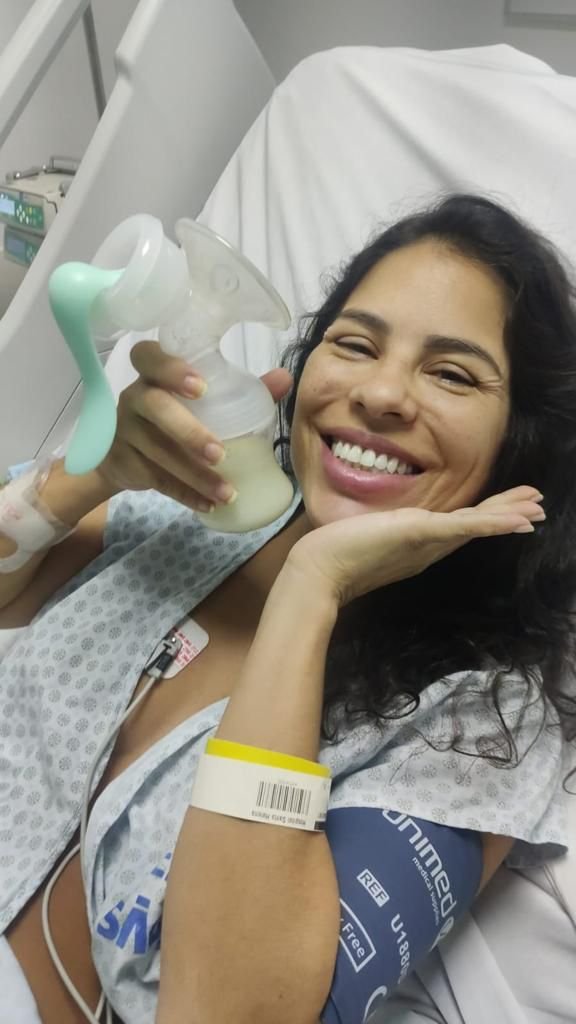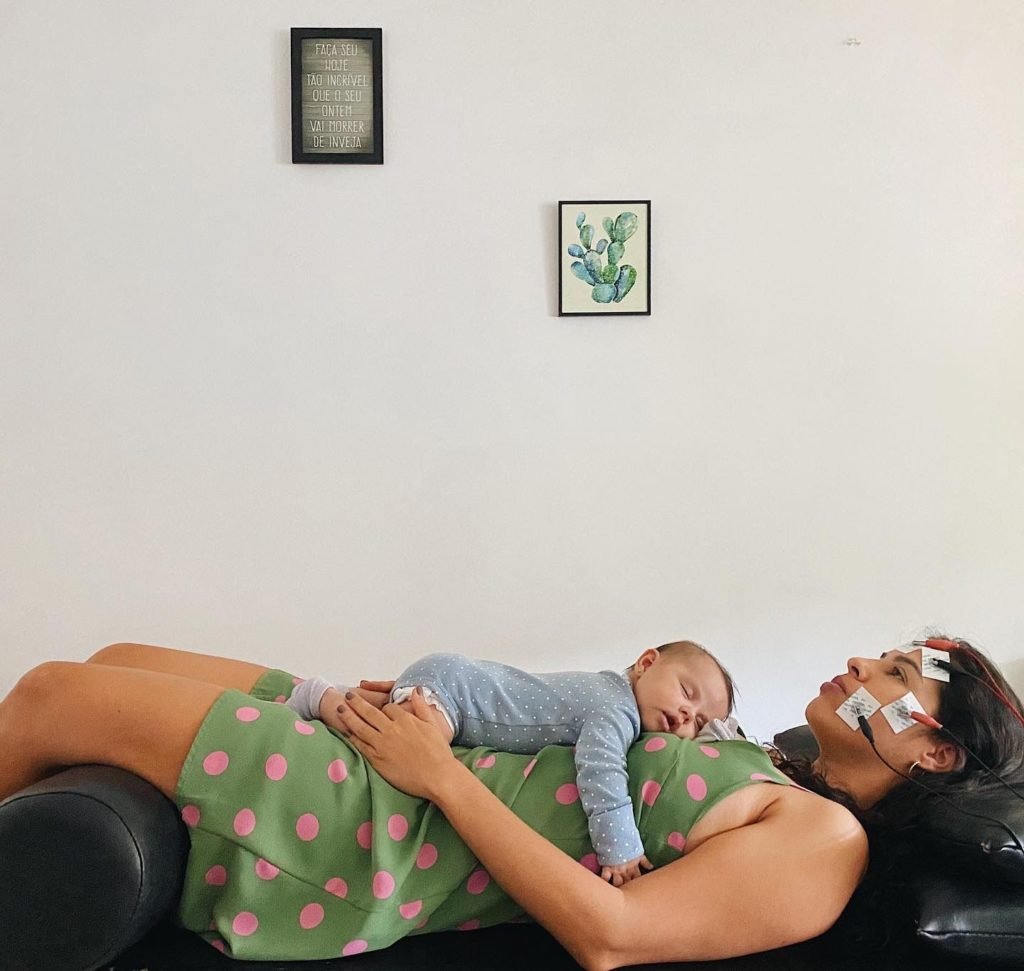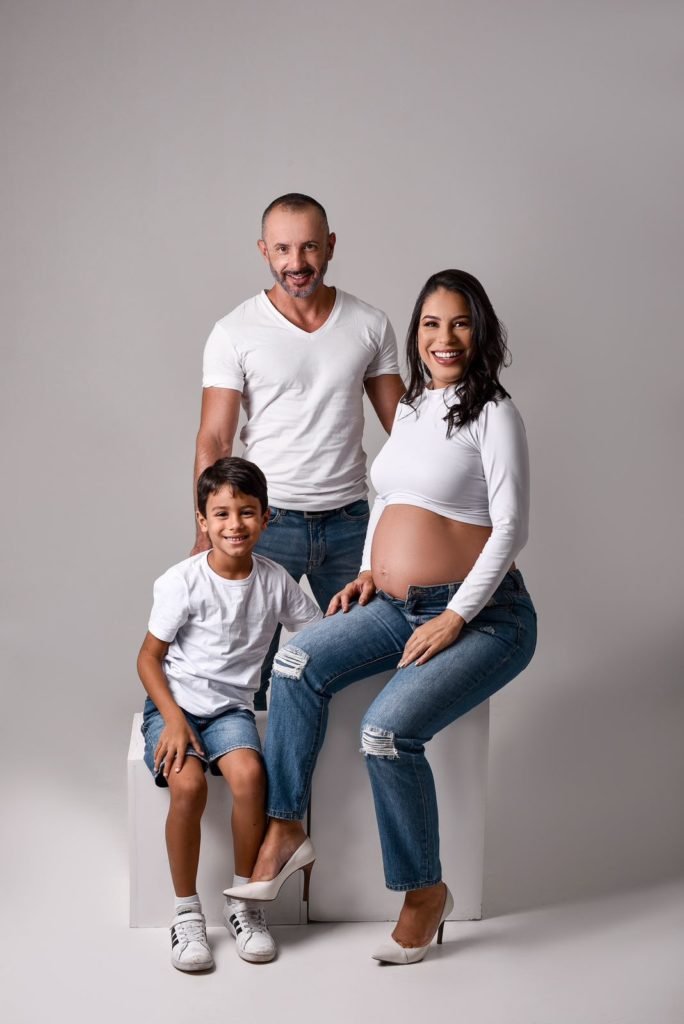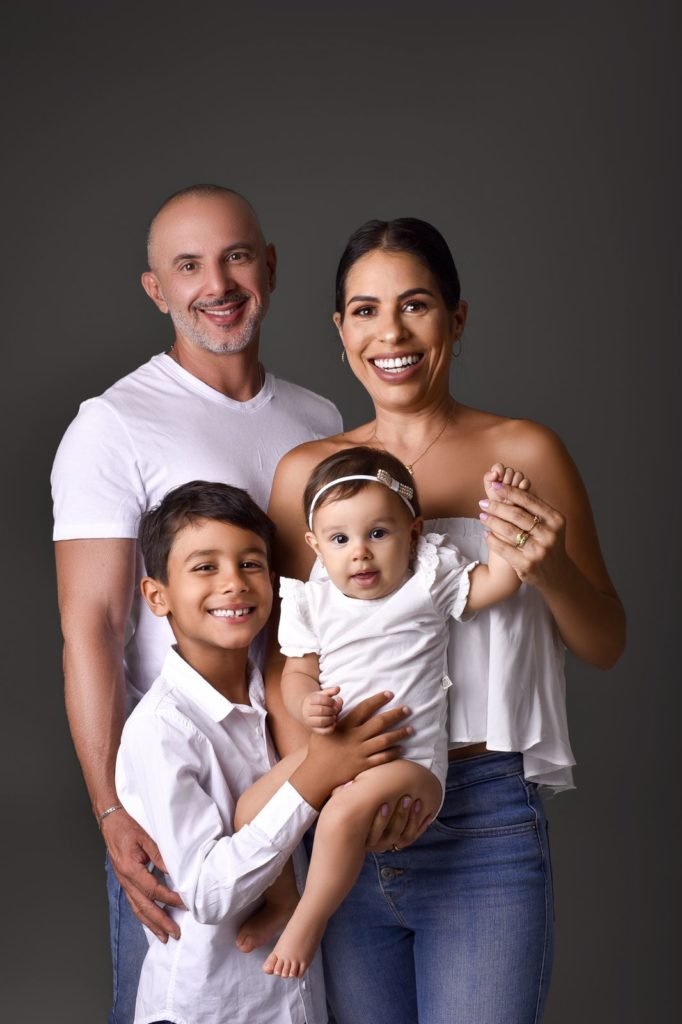Civil servant Daniela Pina, 36, had just six days before the birth of her youngest daughter when she had her first stroke. In the same week of 2022, she would suffer two more episodes of the disease. The civil servant was unable to identify the signs of the accident in herself and believed that the symptoms of the stroke were postpartum fatigue.
“I remember looking at my daughter breastfeeding and I started drooling on her face. I didn’t have the strength to hold her in my arms and I was afraid of letting her fall. I felt exhausted”, says Daniela, who is the mother of Francisco, 7, and Catarina, 1.
The first signs of the stroke began when the youngest was just three days old. Daniela had an unexpected high blood pressure attack, and the doctors suspected eclampsia, but ended up sending her back home. That’s when she started having migraines and confusion.
“I had a very bad headache, from the back of my neck to my teeth. Any noise, any light, took me out of seriousness. My legs started to give way and tingle and I thought that was all a sign of the tiredness of the first days of motherhood”, she says.
She recalls that, when she started to feel the symptoms of the stroke, such as difficulty speaking and moving, she was unable to identify the manifestation of the attack. “Only when I spoke to my mother, who luckily was at my house helping me, did she know how to identify that I was not well”, she sums up.
Daniela stayed more than four hours at home after the onset of symptoms before going to the hospital. “I went to sleep, I thought I was exhausted,” she explains. After the first stroke, she finally went to the hospital and had two more accidents while she was in the hospital.
The civil servant was unable to move her legs for three days. “I thought I wasn’t going to walk anymore. Walking again for me was a magical, unforgettable experience. I felt like I was coming back to life,” she points out.
Daniela felt the first symptoms when her daughter Catarina was only three days oldpersonal collection
 Daniela Pina, 36-year-old woman who had a stroke while breastfeeding – Metrópoles
Daniela Pina, 36-year-old woman who had a stroke while breastfeeding – MetrópolesPart of her daughter’s breastfeeding had to be done remotely, with the civil servant still in the ICUpersonal collection
 Daniela Pina, 36-year-old woman who had a stroke while breastfeeding – Metrópoles
Daniela Pina, 36-year-old woman who had a stroke while breastfeeding – MetrópolesDaniela underwent several physiotherapy sessions to recover her facial movements.personal collection
 Daniela Pina, 36-year-old woman who had a stroke while breastfeeding – Metrópoles
Daniela Pina, 36-year-old woman who had a stroke while breastfeeding – MetrópolesDaniela next to her husband and son Francisco, before the strokepersonal collection
 Daniela Pina, 36-year-old woman who had a stroke while breastfeeding – Metrópoles
Daniela Pina, 36-year-old woman who had a stroke while breastfeeding – MetrópolesThe family remains united after the arrival of Catarina and the strokes. The civil servant continues to carry out rehabilitationspersonal collection
0
A stroke happens when vessels that supply blood to the brain become blocked or ruptured. This causes the blood flow not to reach all parts of the organ, preventing its functioning. In Daniela’s case, 25% of her brain mass was affected by the accident.
She had what is called reversible cerebral vasoconstriction syndrome, a rare condition that affects postpartum women. “There are still many unknowns related to this syndrome. We know that there is a connection with women who have recently given birth, but it is very rare and several cases of stroke occur without an apparent cause”, says neurosurgeon Victor Hugo Espíndola, a stroke specialist in Brasilia.
One year after hospitalization, the civil servant is still recovering from the consequences of the condition. Daniela has difficulty organizing her own memory and has less strength in the limbs on the left side of her body, but she remembers that her condition was much more serious. “For me, it was like being reborn practically with the birth of my daughter,” she says.
What are the symptoms?
Espíndola guides four easy steps to identify signs of stroke. He asks people to memorize the initials SAMU, the same as the emergency medical service.
“In the S, we ask the patient to smile and we analyze whether there is any bending. In A, hugging, we ask him to raise his arms to see if there is a difference in strength between the limbs”, says the neurosurgeon.
“In M, we ask the individual to sing a song to assess memory and diction. Finally, at U, we remember the urgency of going to the hospital immediately if any of the symptoms are identified”, adds Espíndola.
a slow rehabilitation
As a result of the strokes, Daniela suffered facial and limb paralysis on the left side of her body. “It was very embarrassing for me. I’ve always been a very vain woman and I felt bad drinking water and feeling it run down my lips, ”she says.
Daniela had to pump milk from the ICU to maintain her daughter’s diet, but as Catarina grew up, the civil servant was also adapting to life. Thanks to treatments carried out at the Sarah Kubitschek Hospital, she was able to almost completely resume her movements, but she still faces cognitive difficulties and does not have the same muscle strength as before the accident.
“I worry about living my life. I do therapy, swimming. I take care of my family as best I can and I am lucky to have the support of my mother and sister to help me take care of my children. But just being able to be a mother, being alive, present, I feel blessed”, says Daniela.
What to do in case of stroke
The sooner the stroke is diagnosed and treated, the better the chances of full recovery. Obese, hypertensive and smokers should be given extra attention, as they are the main victims of the disease.
In case of suspected stroke, call SAMU (192) or the fire department (193) immediately and take the person immediately to a hospital for detailed clinical evaluation.
Get news from metropolises on your Telegram and stay on top of everything! Just access the channel: https://t.me/metropolesurgente.
